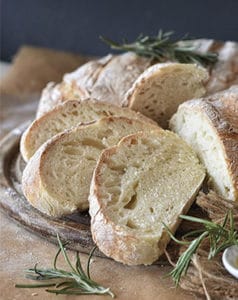Which oil is better for frying, and which for salads?
Oils are rich in unsaturated fatty acids (omega-3, omega-6 and omega-9), which have a beneficial effect on cardiovascular function, promote brain cell function, strengthen the immune system. Oils are also rich in vitamin E - an antioxidant that neutralizes free radicals, before they start to destroy the cells of our body and stop the chain reactions that are harmful to the body. The fats in oils help the body absorb fat-soluble vitamins A, D, E, and K as well as beta-carotene, and are needed for the synthesis of many hormones. To prevent these processes from slowing down or even stopping, you need to consume 0.8 g to 1 g of fat per kg of body weight each day, or about 30% of your total daily caloric intake.
Oils are healthier and less healthy, that is, they contain more or less of the nutrients we need, but not all oils, even the healthiest ones, are suitable for frying.
Oil evaluation criteria
Smoke point
The smoke point (also called the smoking temperature or burning temperature) is the temperature at which the oil begins to smoke, burn, decompose. The oil may not burn with a flame and smoke may not appear - this is the temperature at which the oil begins to decompose, become toxic and is no longer safe to use. The higher this temperature, the more suitable the oil for frying and especially for frying.
Unrefined vegetable oils and cold-pressed oils have a lower smoke point compared to refined oils and animal fats.
The longer the oil is heated (or reused repeatedly, as some fast food restaurants do), the greater the health risk of eating the products prepared in it.
Studies on the health effects of superheated and reheated oils:
Risk factors for heated vegetable oils and cardiovascular disease
Health effects of heated soybean oil, sunflower oil and fatty fumes
Stability and saturation of fatty acids in oils
The saturation and thermal stability of the oil is determined by the amount of saturated fatty acids in it - the more saturated fatty acids it contains, the more stable it is, but that does not mean that it is also healthier.
Any oil (and any other fat) contains three types of fatty acids - saturated, monounsaturated and polyunsaturated.
Saturated fatty acids hardly oxidize when exposed to high temperatures, so butter and animal fats, which are predominantly saturated fat, remain solid at room temperature.
Monounsaturated and polyunsaturated fatty acids become unstable when exposed to light, heat and oxygen. This means that oils that contain large amounts of polyunsaturated fatty acids are more reliant on oxidation processes, which produce decomposition products that are harmful to us. For this reason, it is recommended to store oils with a low content of saturated fat in a dark place and in a tightly closed container.
It is also recommended to pay attention the ratio of omega-6 to omega-3 essential fatty acids (both are polyunsaturated fatty acids). At the time of the genetic models of humans, their ratio in the diet was about 1: 1, now an average of 15: 1 to 16.7: 1, which increases the risk of cardiovascular disease. Omega-6 is thought to promote inflammatory processes, while omega-3 inhibits them. Our body needs both, ideally if they are in balance - close to 1: 1. Knowing the ratio of omega-6 to omega-3 in the oil, you can bring the ratio of it in your diet to the ideal - 1: 1. Experts recommend not to reduce omega-6 in the diet, but to increase the amount of omega-3.
Name | Quality | Smoke point | Omega-6 to Omega-3 ratio |
Beef fat | 250 ° C | ||
Lard | 190 ° C | 11:1 | |
Butter | 150 ° C | 9:1 | |
Butter | Clarified (GI) | 250 ° C | 0:0 |
Canola oil | Unrefined | 107 ° C | 2:1 |
Canola oil | Refined | 204-232 ° C | 3:1 |
Sunflower oil | Unrefined, cold pressed | 107 ° C | 40:1 |
Sunflower oil | Partially refined | 232 ° C | 40:1 |
Olive oil | Extra virgin | 160-190 ° C | 9:1 |
Olive oil | Virgin | 210 ° C | 13:1 |
Olive oil | Refined | 199-243 ° C | |
Coconut oil | Unrefined, cold pressed, virgin | 177 ° C | – |
Coconut oil | Refined, dry | 204 ° C | – |
Grape seed oil | 216 ° C | 676:1 | |
Sesame oil | Unrefined | 177 ° C | 138:1 |
Sesame oil | Partially refined | 232 ° C | 138:1 |
Almond oil | 221 ° C | Omega-6 only | |
Avocado oil | Refined | 270 ° C | 12:1 |
Peanut oil | Unrefined | 160 ° C | 32:1 |
Peanut oil | Refined | 227-232 ° C | 32:1 |
Walnut oil | Unrefined | 160 ° C | 5:1 |
Walnut oil | Partially refined | 204 ° C | 5:1 |
Corn oil | Unrefined | 178 ° C | 83:1 |
Corn oil | Refined | 230-238 ° C | 83:1 |
Linseed oil | Unrefined | 107 ° C | 1:4 |
Palm oil | 235 ° C | 46:1 |
Percentage of fatty acids
| Name | Saturated fatty acids (%) | Monounsaturated fatty acids (%) | Polyunsaturated fatty acids (%) |
| Salmon fat | 22 | 33 | 45 |
| Lard | 41 | 47 | 12 |
| Beef fat | 52 | 44 | 4 |
| Butter | 66 | 30 | 4 |
| Canola oil | 7 | 64 | 29 |
| Almond oil | 9 | 73 | 18 |
| Linseed oil | 9 | 18 | 73 |
| Sunflower oil | 10 | 86 | 4 |
| Walnut oil | 10 | 24 | 66 |
| Avocado oil | 12 | 74 | 14 |
| Olive oil | 14 | 75 | 11 |
| Corn oil | 14 | 29 | 57 |
| Sesame oil | 15 | 42 | 43 |
| Peanut oil | 18 | 49 | 33 |
| Palm oil | 52 | 39 | 9 |
| Coconut oil | 91 | 7 | 2 |
Whether the oil is refined or unrefined
Cold pressed and pomace oils
These are oils obtained by pressing fruit or seeds. The oil is squeezed out physically without the use of chemicals - so these oils retain the natural taste and color of the raw material. They also retain almost all the nutrients and vitamins in the raw material, but are more sensitive to heat (lower smoke point) and light and deteriorate faster. Cold pressed oils are more turbid in appearance, which is contrary to the widespread belief that the oil should be clear - in my opinion, it is more indicative of its better nutritional value (not all the benefits have been filtered out).
Refined oils
These are oils obtained by using chemical solvents and then filtering and otherwise removing impurities from the resulting oil. Refined oils are cheaper, free of odor-neutral, odorless and have a higher smoke point temperature, but are almost free of nutrients and vitamins, as most volatile essential substances (which give the oil its characteristic aroma) are destroyed during processing. both valuable vitamins - A, E, D2. And since the oils are chemically extracted, they are likely to still contain residues of the chemicals used (of course, in the allowable amount of -😊).
The taste of the oil and the nutrients it contains
The main thing I want to say is don't trust the names, but read the labels. For example, it is possible that Cedar Nut Oil or Grape Seed Oil contains, say, 30% Cedar Nut or Grape Seed Oil and the rest 70% is another type of oil.
It should be borne in mind that oils from different producers can vary considerably in their nutritional composition, including the proportion and type of fatty acids they contain. This can significantly affect their use.
Olive oil
Nutrition and culinary experts agree that one of the most versatile and healthy oils is olive oil, as long as it is cold pressed and unprocessed (labeled "Extra virgin"). Crude olive oil is high in monounsaturated fats and some polyunsaturated fatty acids. Many studies, such as Mediterranean diet, has been shown to have a positive effect on heart health and life expectancy. Olive oil has a relatively lower smoke point compared to other oils, so it is best suited for cooking at low and medium temperatures and in salads.
The term 'cold pressed' indicates that no heat has been used in the pressing process (heating degrades the quality of the oil by increasing its acidity).
The term 'first press' indicates that the oil is obtained from olives and not by re-pressing the olive pomace.
The term 'Pure' (virgin olive oil) indicates that it is a refined olive oil to which a little virgin olive oil has been added.
The oil with a greener color is obtained from previously harvested olives, so their length is "sharper". The oil with an orange-green tinge will be squeezed from the olives harvested later - with a lighter taste and a weak nutty flavor.
Canola oil
Rapeseed oil is obtained from rapeseed. Of all vegetable oils, rapeseed oil has the lowest content of saturated fat and a high smoke point. Rapeseed oil is suitable for cooking at high temperatures. Refined rapeseed oil is usually sold, which means it contains less nutrients. Cold-pressed or crude rapeseed oil is also available, but can be difficult to find.
Sunflower oil
This oil is high in vitamin E - one tablespoon contains about 28% of the recommended daily dose for humans. The oil has a high smoke point and the refined oil does not have a strong taste, which means that it does not suppress the taste of the finished product. However, sunflower oil contains a lot of omega-6 fatty acids - if other products you use also contain omega-6, it may be worth choosing another oil.
Avocado oil
Avocado oil is a great choice. If it is not refined, it is similar to extra virgin olive oil, but with a higher smoke point and no pronounced taste, which means that it is excellent for frying. The content of monounsaturated fat in avocado oil is one of the highest, minus - it is more expensive.
Peanut oil
Peanut oil and nut oils in general are very suitable for giving different flavors, especially because there are so many different types of nuts. Peanut oil has one of the highest content of monounsaturated fats. It gives the food a pleasant nutty taste and aroma and is suitable for cooking in high heat.
Walnut oil
This oil has a low smoke point, so it is not suitable for frying, but it can be used in many other ways - for example, to give a walnut flavor to salads. Walnut oil has a good ratio of omega-6 to omega-3 fatty acids.
Sesame oil
This oil is often used because of its strong taste. It contains both monounsaturated and polyunsaturated fatty acids, but does not contain many other nutrients. Sesame oil has a higher smoke point, so it can be used for cooking in high heat.
Linseed oil
It is a great source of omega 3. Linseed oil is suitable for making sauces and salads. Linseed oil oxidizes (degrades) very quickly and must not be heated. When buying, pay attention to the expiration date and after opening it should be stored in a dark place and in a low temperature (refrigerator). Damaged oil becomes bitter. I recommend choosing small volumes, because the oil must be used quickly after opening.
Coconut oil
There is very conflicting information about this oil. Unlike other vegetable oils, coconut oil is predominantly saturated fat. It is traditionally considered to be a saturated fat increases blood cholesterol levels, on the other hand, there are also studies that suggest that not all saturated fats are harmful to health.
Coconut oil can be used in cooking at very high temperatures because it is more stable in high heat.
Vegetable oils
The term "vegetable oil" is used to refer to any oil obtained from plants. Unless it is stated that the oil in question is, for example, 100% sunflower oil, it is likely that the packaging contains a mixture of several oils (Blended oil).
Vegetable oils are usually refined (further processed), which means that not only do they lack flavor, but they also have significantly less or no nutrients (compared to cold-pressed and crude oils).
Which oil is more suitable for frying, which for salads?
Frying oil
Choose an oil with a neutral taste and a high smoke point, preferably above 180 ° C, such as rapeseed oil, refined olive oil, avocado oil, vegetable oil or peanut oil.
Oil for frying
Choose an oil with a neutral taste - so that it does not affect the taste of the products to be prepared, such as rapeseed oil or vegetable oils. When frying in a pan, the temperature is rarely below 120 ° C, if you want to give a golden crust - around 140 - 160 ° C, in the oven - up to 250 ° C.
Oil for stewing and roasting
Choose a more aromatic oil with a lower smoke point, such as Extra Virgin Olive Oil, Rapeseed Oil, Peanut Oil or Sesame Oil.
Salad oil
Choose the aromatic oil that tastes best to you. The point of smoke is irrelevant here, for example, extra virgin extra virgin olive oil.
Labeling foods as 'healthy' or 'unhealthy' is always a bit tricky. Nutrition is a complex science and all products can have a place in a varied and balanced diet. I prefer cold-pressed Extra Virgin olive oil because it is the most nutritious and the high smoke point is not important to me (I use minimal oil when frying and I do not use fried products in principle). The choice of oil depends on your menu and how you cook.
Sources:
Introduction to Fats and Oils Technology (2nd Edition)
Share this article
Follow me on Facebook
I recommend reading these articles as well

Deep muscles - what is it and why should it be trained?
Deep muscles are not visible - however, they are important for maintaining health and especially back health.

Energy drinks and Sports drinks
How are energy drinks different from sports drinks and how do they affect our performance and health?

Why choose whole grain products?
Whole grains play an important role in all diets aimed at strengthening the heart and reducing the risk of cancer. Whole grains are high in fiber and not only…

Walking and weight
What happens to our bodies when we walk? How does regular walking affect our health and weight?

